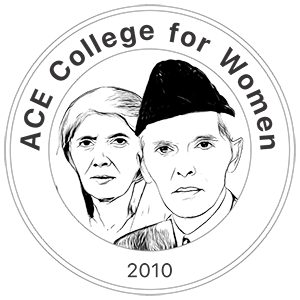Phytochemical Constituents and in vitro Antioxidant Properties of the Root of Mallotus subulatus Mull. Arg (Euphorbiaceae)
| Received 16 Jun, 2025 |
Accepted 15 Sep, 2025 |
Published 31 Dec, 2025 |
Background and Objective: Mallotus subulatus is a tropical plant traditionally used in African medicine to treat various ailments, largely attributed to its phytochemical and antioxidant components. Despite its traditional applications, scientific validation of its phytochemical content and antioxidant potential remains limited. This study aimed to investigate the phytochemical composition and in vitro antioxidant activity of the methanolic root extract of Mallotus subulatus to support its ethnomedicinal use. Materials and Methods: Phytochemical screening was performed on methanolic root extracts to detect the presence of major secondary metabolites. Antioxidant potential was evaluated using the DPPH free radical scavenging assay and the phosphomolybdate method for total antioxidant capacity, with ascorbic acid as the standard. Extract concentrations tested included 62.5, 125.0, 250.0, 500.0, and 1000.0 μg/mL. Percentage inhibition and IC50 values were calculated to determine antioxidant efficiency. Results: The extract tested positive for alkaloids, flavonoids, tannins, phenolics, anthocyanins, and soluble carbohydrates, but lacked saponins. The DPPH assay results showed concentration-dependent activity, with the highest inhibition (61.11±1.85%) at 1000.0 μg/mL and the lowest (16.67±1.85%) at 62.5 μg/mL. The extract exhibited moderate antioxidant potential compared to the ascorbic acid standard. Conclusion: The presence of multiple phytochemicals and notable antioxidant activity suggests that Mallotus subulatus root extract may serve as a natural source of antioxidants. Further studies are recommended to isolate active compounds and assess in vivo efficacy and toxicity.
How to Cite this paper?
APA-7 Style
Rachael,
E.U., N.M.,
E., Ugwah,
E.J., Abimbola,
O.A., Ajoku,
E., Olaitan,
S.L., Oladosu,
M.A., Abah,
M.A., Amuchechukwu,
K.E., Farinde,
T.D., Farinde,
O.N., Asogwa,
K., Awojulu,
T., Ameh,
S., Olosunde,
A., Roy,
Y.E., Ene,
N.B. (2025). Phytochemical Constituents and in vitro Antioxidant Properties of the Root of Mallotus subulatus Mull. Arg (Euphorbiaceae). Trends in Agricultural Sciences, 4(4), 323-331. https://doi.org/10.17311/tas.2025.323.331
ACS Style
Rachael,
E.U.; N.M.,
E.; Ugwah,
E.J.; Abimbola,
O.A.; Ajoku,
E.; Olaitan,
S.L.; Oladosu,
M.A.; Abah,
M.A.; Amuchechukwu,
K.E.; Farinde,
T.D.; Farinde,
O.N.; Asogwa,
K.; Awojulu,
T.; Ameh,
S.; Olosunde,
A.; Roy,
Y.E.; Ene,
N.B. Phytochemical Constituents and in vitro Antioxidant Properties of the Root of Mallotus subulatus Mull. Arg (Euphorbiaceae). Trends Agric. Sci 2025, 4, 323-331. https://doi.org/10.17311/tas.2025.323.331
AMA Style
Rachael
EU, N.M.
E, Ugwah
EJ, Abimbola
OA, Ajoku
E, Olaitan
SL, Oladosu
MA, Abah
MA, Amuchechukwu
KE, Farinde
TD, Farinde
ON, Asogwa
K, Awojulu
T, Ameh
S, Olosunde
A, Roy
YE, Ene
NB. Phytochemical Constituents and in vitro Antioxidant Properties of the Root of Mallotus subulatus Mull. Arg (Euphorbiaceae). Trends in Agricultural Sciences. 2025; 4(4): 323-331. https://doi.org/10.17311/tas.2025.323.331
Chicago/Turabian Style
Rachael, Eze, Ukamaka, Eze, N.M., Ekele Jiata Ugwah, Onikoyi Aminat Abimbola, Edesiri Ajoku, Sulaiman Luqman Olaitan, Micheal Abimbola Oladosu, Moses Adondua Abah, Kevin Emmanuel Amuchechukwu, Tobi David Farinde, Olutayo Nathanael Farinde, Kelechi Asogwa, Taiwo Awojulu, Sunday Ameh, Adedapo Olosunde, Yohanna Emochone Roy, and Ngbede Blessing Ene.
2025. "Phytochemical Constituents and in vitro Antioxidant Properties of the Root of Mallotus subulatus Mull. Arg (Euphorbiaceae)" Trends in Agricultural Sciences 4, no. 4: 323-331. https://doi.org/10.17311/tas.2025.323.331

This work is licensed under a Creative Commons Attribution 4.0 International License.




